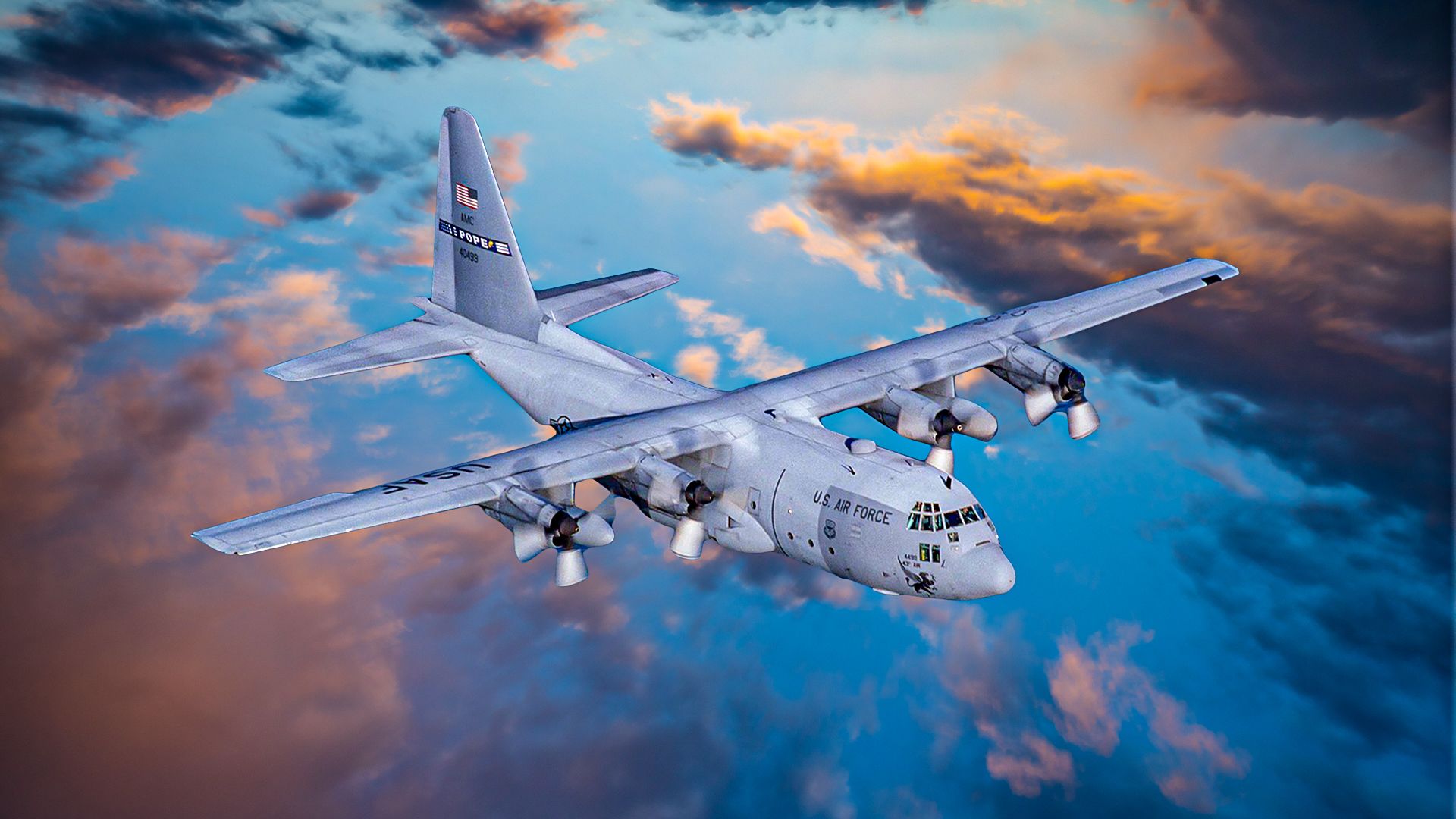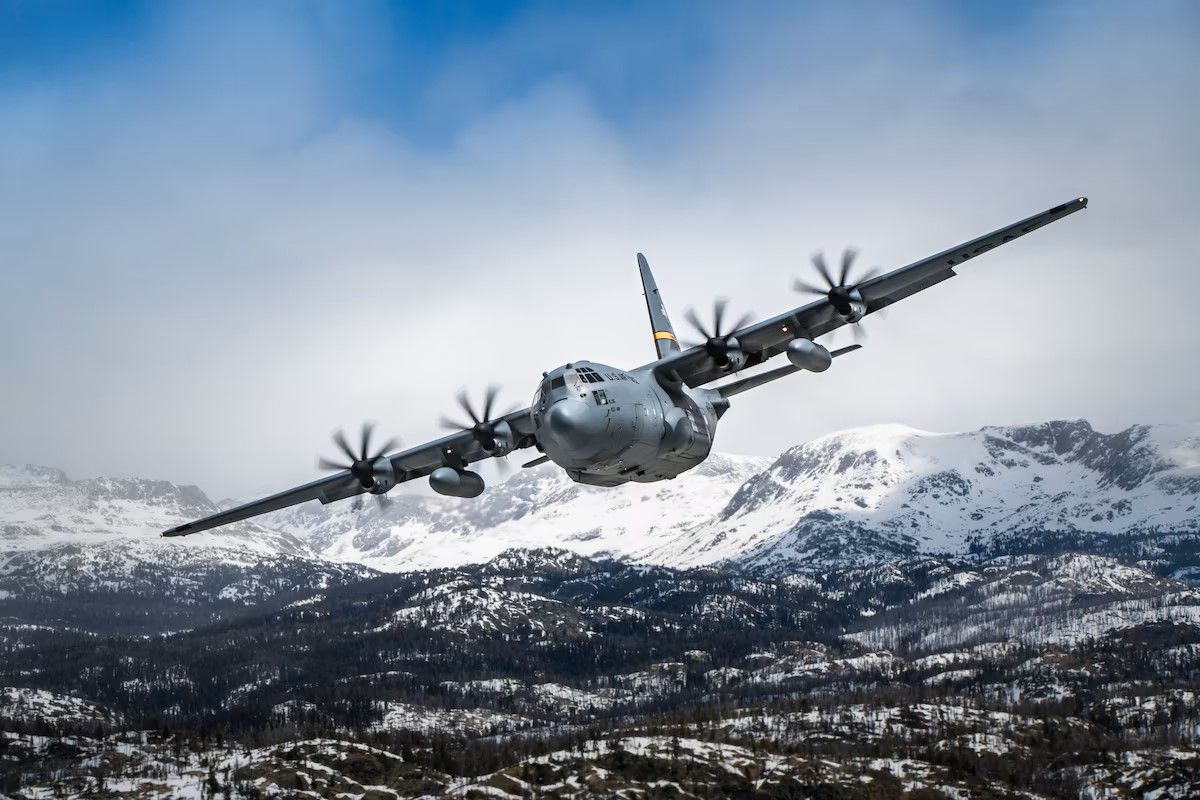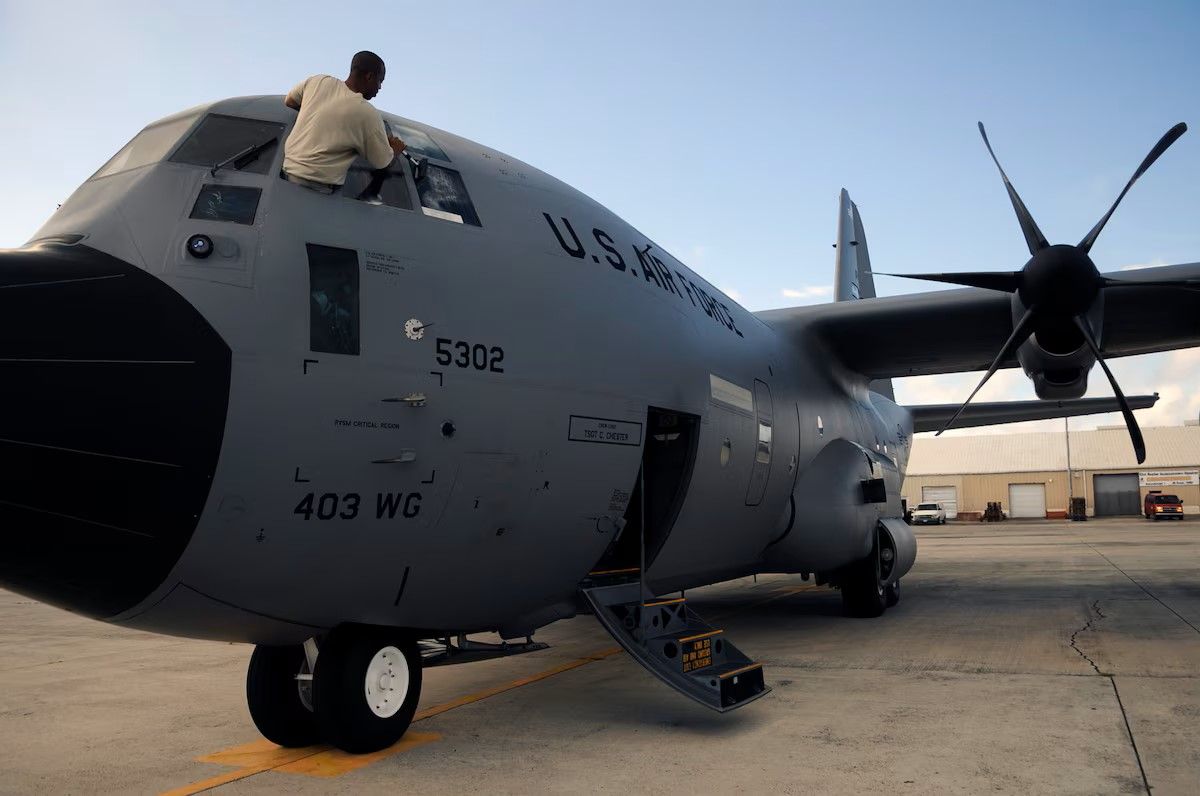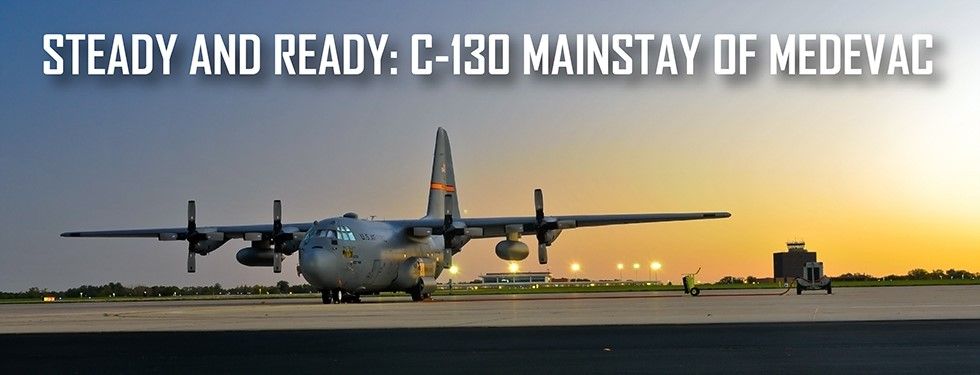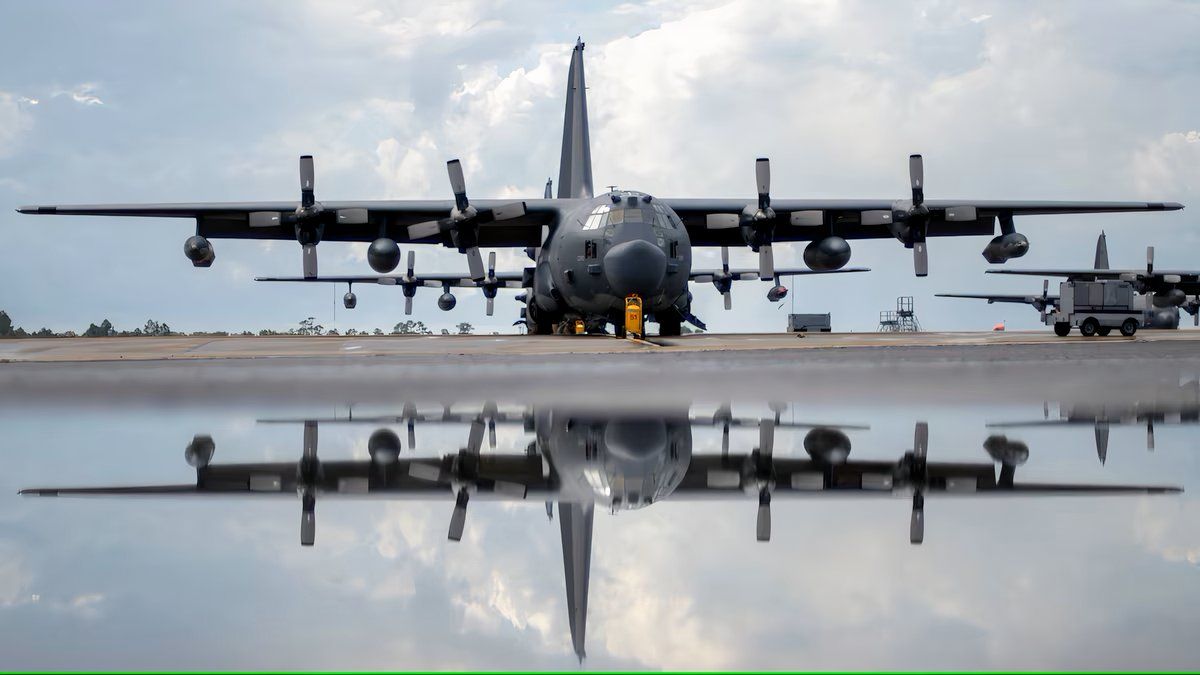Summary
- The C-130 Hercules will celebrate its 70th anniversary in August 2024, being the longest continuously produced military aircraft.
- The AC-130 Spectre Gunship has a deadly history in wars, such as Operation Urgent Fury and Operation Just Cause.
- The C-130 plays a crucial role in MEDEVAC missions, transporting patients over long distances for critical care.
In the past week, this writer has made a note of the fact that two famous U.S. Air Force (USAF) warplanes, the General Dynamics/Lockheed Martin F-16 Fighting Falcon AKA “Viper,” and the Republic Fairchild A-10 Thunderbolt II AKA “Warthog,” are both 50+ years old, i.e., quinquagenarians. Well, those two warbirds, venerable as they are, are still mere spring chickens (bad avian pun intended) compared to the warplane we’re going to discuss now, which will become a septuagenarian two months from the day these words are being typed.
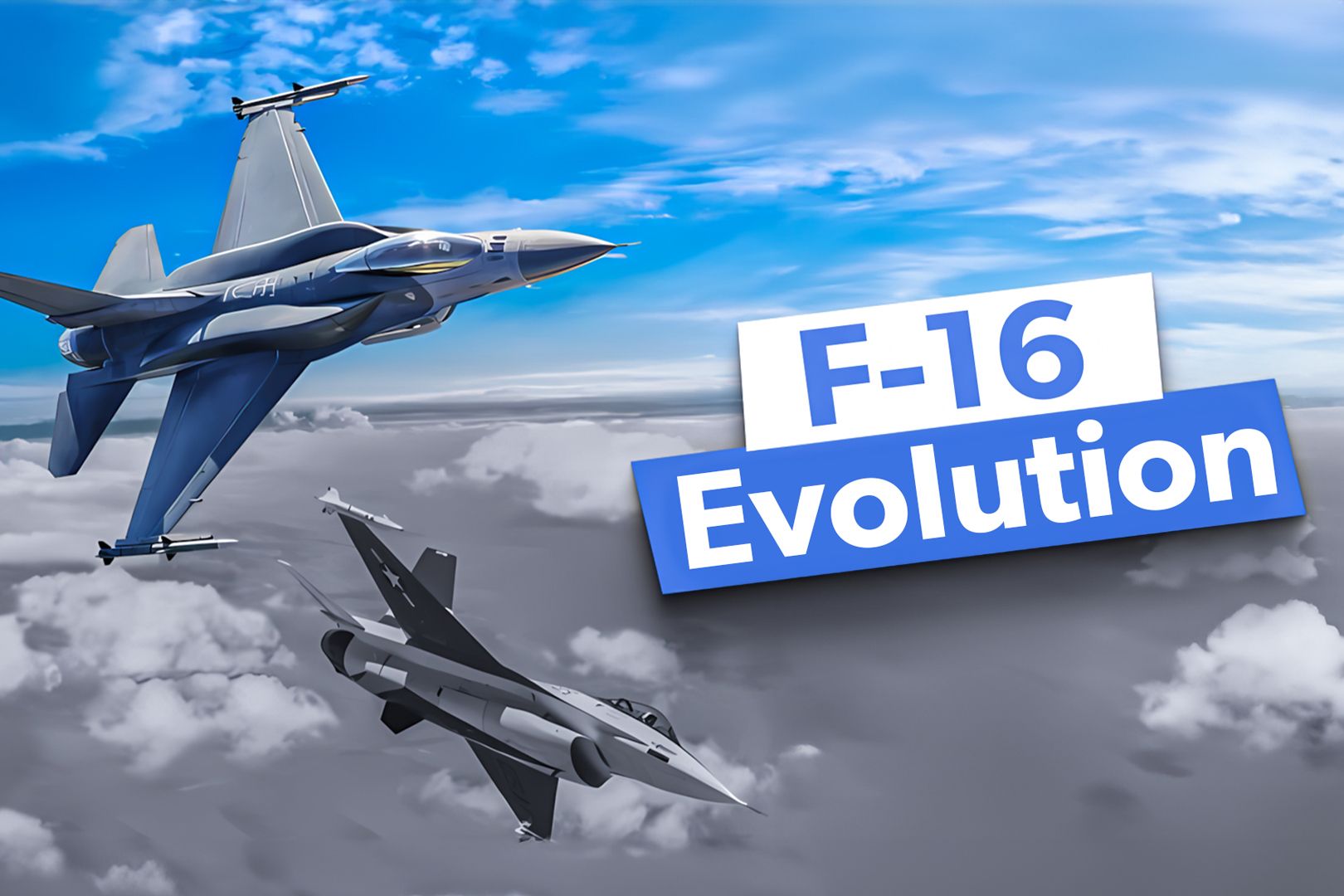
Related
How Has The F-16 Evolved Since Its Introduction?
The F-16 celebrates its golden anniversary this year. However, the plane hasn’t remained frozen in time, but rather has continued to evolve.
Yes, amazingly enough, the venerable Lockheed (now Lockheed Martin) C-130 Hercules will celebrate the 70th anniversary of its maiden flight on August 23, 2024 (which makes it a Virgo instead of a Leo, but eh, nobody’s perfect). Indeed, the C-130 is *the* longest continuously produced military aircraft, at more than 60 years, with the latest C-130J Super Hercules variant being produced as of 2023.
A major reason why the “Herc” (sometimes spelled “Herk”) has stayed in service for so long is the airframe’s versatility. Simple Flying will now discuss five prime examples of versatility [insert your beloved branch of service here] that have sustained the Herc’s remarkable USAF career for all these decades.
1
AC-130 Spectre Gunship
“Death From Above”
Might as well start with the deadliest and most fearsome variant first. The AC-130 was the successor to another venerable gunship that was plenty badass in its own right, the AC-47 “Spooky” AKA “Puff the Magic Dragon” variant of the C-47 Skytrain/Dakota, as dramatized in this famous movie scene:
But when Spooky II AKA the Spectre arrived on-scene in 1966, smack dab in the middle of the Vietnam War, to supplement and eventually replace the AC-47, it brought the advantage of even greater firepower due to its larger size and carrying capacity. Greater firepower to the tune of 20mm Vulcan cannons, 25mm GAU-12 Equalizer cannons, 40mm Bofors guns… and, starting with the AC-130H variant, would you believe an M137 105 mm howitzer!
After ravaging Viet Cong (VC) and North Vietnamese Army (NVA) personnel and vehicles alike during the Vietnam War, the Spectre gunship continued to demonstrate its deadly effectiveness in Operation Urgent Fury (the 1983 invasion of Grenada), Operation Just Cause (the 1989 invasion of Panama), and Operation Desert Storm (the 1991 Persian Gulf War). The warbird continued to distinguish itself in the current century during the Global War On Terror (GWOT).
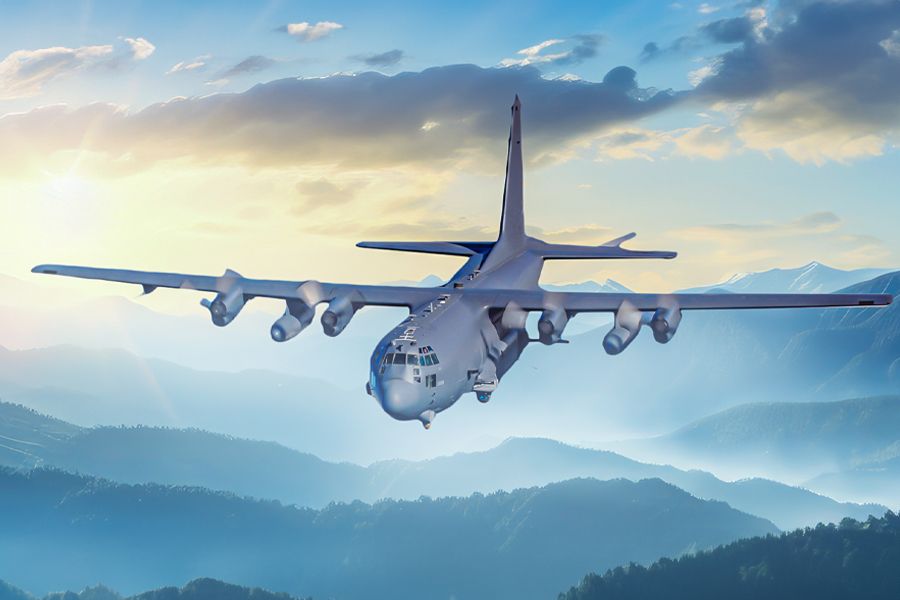
Related
What Role Does The Lockheed AC-130 Gunship Play In The US Air Force?
The type serves a unique operational purpose.
The Panama performance (a mission to overthrow Panamanian strongman Manuel Noriega) was particularly noteworthy. Therein, those gargantuan gunships laid waste to Panamanian Defense Force (PDF) Headquarters and numerous command and control (C2) facilities, thus earning a Lt. Gen. William H. Tunner Award and a Mackay Trophy for their troubles.
2
C-130A through C-130J: Troop transport and tactical airlift
The raison d’être for the C-130’s initial design
“C-130 rollin’ down the strip/[insert your service branch here] gonna take a little trip/Mission top-secret, destination unknown/Don’t even know when we’re coming home!”
Anyone who has served in the U.S. Armed Forces will recognize some version of that ubiquitous running cadence (AKA “Jody”), and it brings to mind two of the original intended purposes for the C-130’s design: troop transport and cargo transport. Just like with the gunship function, the Herc replaced the Skytrain in those roles as well. Jeff Rhodes, a Lockheed Martin Aeronautics historian, gives the historical background (as quoted by Andrew Tunnicliffe in a May 2022 interview for Airforce Technology:
“‘In World War II, airlifters like the C-46 and C-47 were taildraggers and had to be loaded by hand and couldn’t carry much. They could land on dirt or grass but had to be careful not to be too heavy…”
“…It wasn’t until the C-130 came along that almost all these challenges were addressed. Rhodes says it had a low floor and could carry a ‘truly useful load’; its space was ‘versatile and adaptable’ and its four engines on a high wing meant it could get into, and out of, tight spaces…”
3
WC-130 “Hurricane Hunter”
Mission: Mother Nature
No, “WC” doesn’t stand for “Water Closet” in this instance. Whilst the AC-130 variant of the “Herc” rains down figurative metallic “storms” of ordnance upon enemy forces, the WC-130 deals with the more literal types of storms that emanate from Mother Nature and can be even deadlier than metal storms. In other words, the “W” in “WC” stands for “Weather.”
The USAF’s use of the Hercules as a weather reconnaissance bird dates back to 1962, when their Air Weather Service (AWS) received its first “Herk” to conduct air sampling missions in the wake of a resumption of atmospheric weapons testing by the Soviet Union. Since then, the active-duty USAF and Air Force Reserve have operated a total of 50 WC-130s in five variants. the official USAF Fact Sheet picks up the narrative from there:
“The WC-130J is the weather data collection platform for the 53rd Weather Reconnaissance Squadron located at Keesler Air Force Base, Miss… The WC-130 provides vital tropical cyclone forecasting information. It penetrates tropical cyclones and hurricanes at altitudes ranging from 500 to 10,000 feet (151.7 to 3,033.3 meters) above the ocean surface depending upon the intensity of the storm.”
“An average weather reconnaissance mission might last 11 hours and cover almost 3,500 miles while the crew collects and reports weather data.”
Amazingly, in spite of the high-risk nature of the work performed by the Hurricane Hunter crews, only one WC-130 has ever been lost during an operational mission: H-model Serial No. 65-0965, flying in Typhoon Bess northeast of The Philippines on October 12, 1974.
4
MEDEVAC Mission
AC-130s take lives, MEDEVAC C-130s save lives
Well, okay, you could nitpick by saying that the gunship version of the Hercules does in fact *indirectly* save lives, i.e. saving the lives of the Good Guys from attacks by the Bad Guys. Semantic nitpicks aside, the MEDEVAC mission *directly* saves lives; as the acronym implies, is specifically tasked with the medical evacuation of the wounded and injured. As per the info page of the U.S. Air Force Medical Service:
“Since the 1960s, the C-130 Hercules has been a workhorse of the U.S. Air Force aeromedical evacuation capability. Today, it remains a reliable platform to move patients over long distances, allowing Airmen and Guardians to provide critical care in the air, aid in disaster relief missions, and bring warfighters home…”
5
MC-130 Combat Talon
The AC-130 is flown by Air Force Special Operations Command (AFSOC), but that’s not the only SpecOps variant of the Herc that AFSOC employs. Perhaps not coincidentally, the Combat Talon variant also dates back to the Vietnam War, starting with the MC-130E, followed by the MC-130H Combat Talon II (which, in its turn, is slated to be replaced by the new & improved C-130J). Once again, we turn to the ever-trusty U.S. Air Force Fact Sheets for additional information:
“The MC-130H Combat Talon II provides infiltration, exfiltration and resupply of special operations forces and equipment in hostile or denied territory. Secondary missions include psychological operations, and helicopter and vertical lift air refueling.”
“The aircraft features terrain-following and terrain-avoidance radars capable of operations as low as 250 feet in adverse weather conditions. Structural changes to a basic C-130 include the addition of an in-flight refueling receptacle and strengthening of the tail to allow high speed/low-signature airdrop. Their navigation suites include dual ring-laser gyros, mission computers and integrated global positioning system [GPS]. They can locate and either land or airdrop on small, unmarked zones with pinpoint accuracy day or night.”
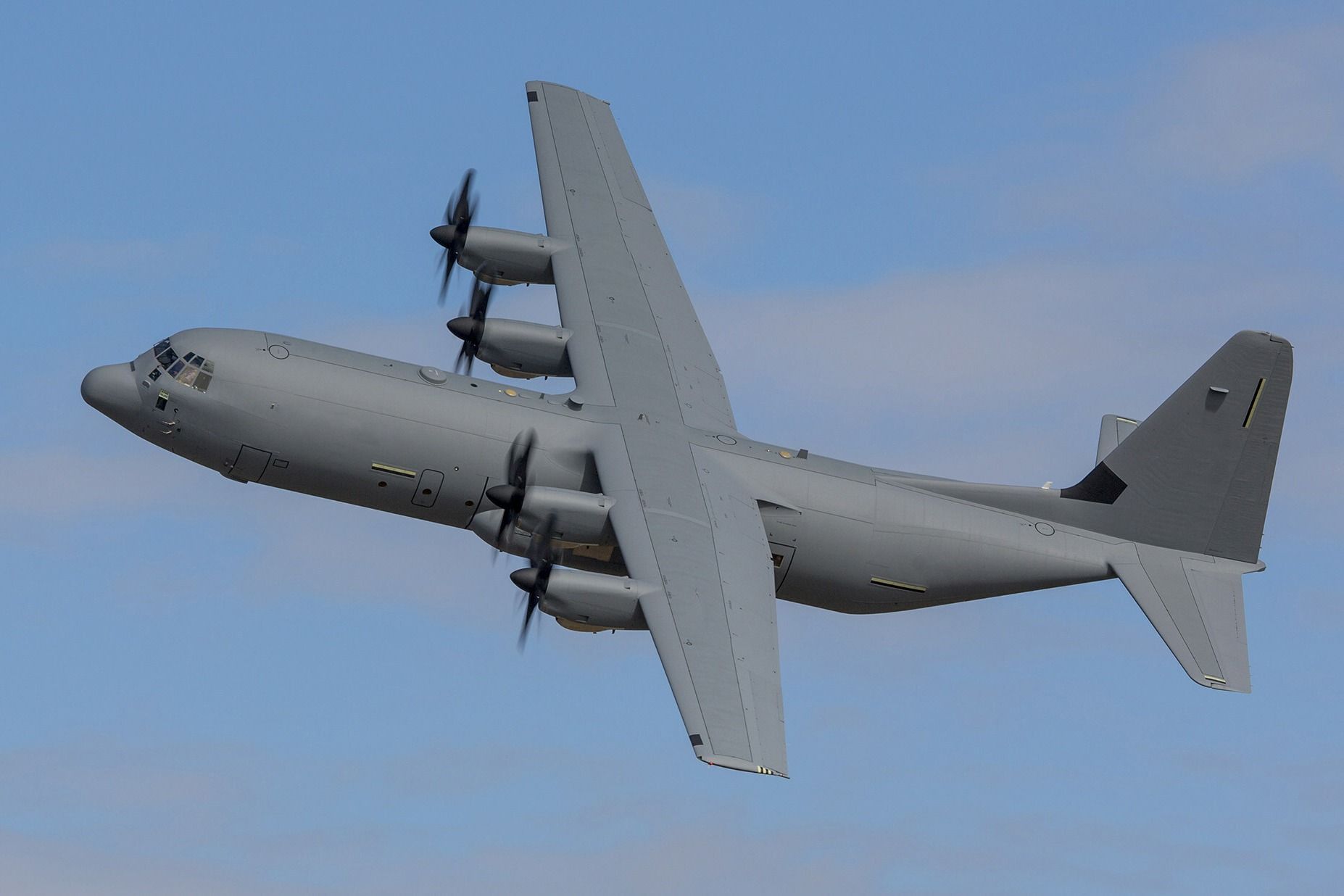
Related
Indian Air Force Lands 2 C-130J Hercules On Short Runway To Rescue Uttarkashi Tunnel Collapse Victims
The planes carried nearly 38,000lbs of rescue equipment, including a new drill machine.

